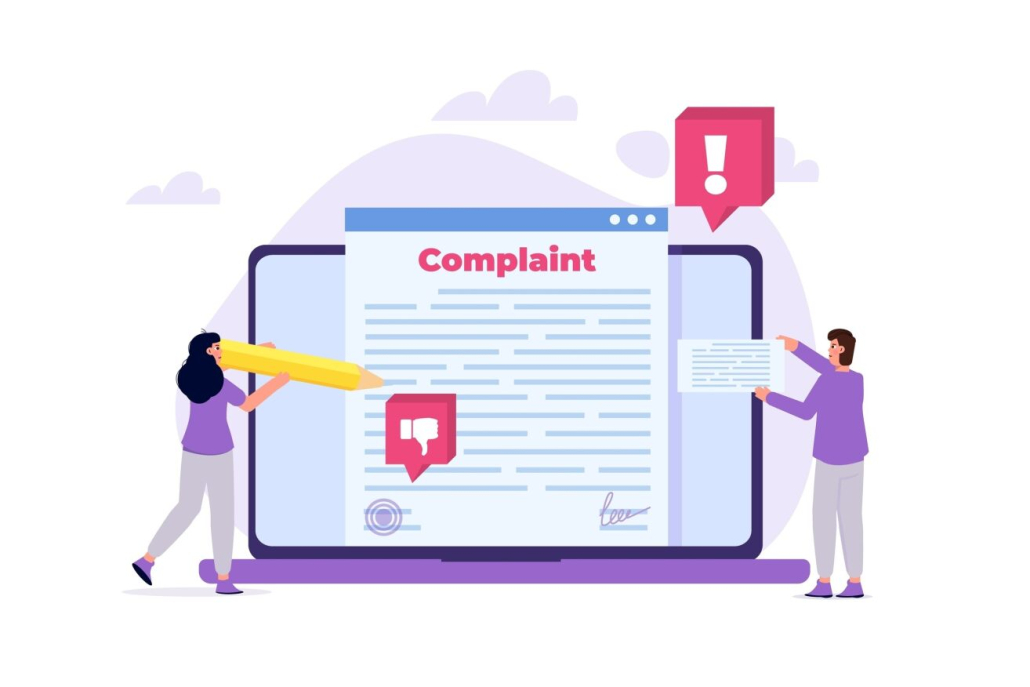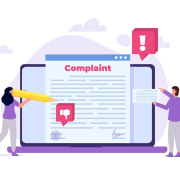How to harness technology for smooth bank complaint management?

In the banking industry, the fewer complaints, the better. How to radically reduce problems with billing purchase discounts? To streamline balancing accounts between the bank and the retail partner you need efficient technology. balancing accounts between the bank and the retail partner you need efficient technology.
This article discusses:
- How complaints can affect customer relationships
- Why purchase discounts are particularly vulnerable to complaints
- What is the technological challenge in cooperation between banks and trading partners
- How to effectively bill discounts to reduce complaints in banking
Efficient complaint handling is a key element of customer service in banking. A complaint is a formal expression of dissatisfaction that requires a structured approach to resolve. And it is quite a challenge for the bank, because the process of solving a complaint takes a number of steps. It involves checking multiple databases and engaging members of different departments, and even the retail partner. These efforts take time and involve costs. In the process, banks must ensure that all necessary documentation is collected and reviewed. Sometimes it takes days before the bank can come back to the customer with a decision regarding the complaint.
At first glance, it seems that complaints are a minefield for the banking industry. In the UK, more than a quarter of customers (27%) have made a formal complaint to their bank, according to the software company Nuix’s “2021 Global Regulator Report.” On top of that, 25% admitted that they would not use the same bank again if they had concerns about the bank’s handling of a problem. On the other hand, it turns out that the more efficiently this procedure is carried out, the better it is for the bank. The customer engagement software company Khoros reports that 83% of customers feel more connected to brands that respond quickly and resolve their complaints.
Discount billing: a hotbed for complaint handling
One area where complaints are exceptionally common is the billing of discounts by retail partners. Banks are eager to offer customers discounts at stores and service providers. In this way, they can increase the number of customers and retain them for longer. However, such offers come with technological challenges which the bank must meet without fail so that the customer does not feel cheated.
Although card payment disputes occur in less than 1% of transactions, they can have a major impact on the bank-customer relationship. A loyal consumer who uses their card and has joined a loyalty program has fulfilled their part of the bargain. They therefore expect the bank to meet their end of the deal. When they discover after some time that the discount is missing, the complaint engine kicks in.
The client who nags the bank for “their due” is dissatisfied. As a result, the brilliant solution that was supposed to improve the customer’s experience, i.e., the discount, deteriorates it. In addition, to defuse the “brand image bomb” and neutralize the negative emotions (or even turn them into a positive experience), the bank has to overcompensate to the customer in a non-standard way. This generates a much greater investment of valuable resources – time and human labor.
Why the complexity in the discount billing process?
The process of settling discounts for purchases is technically highly complex. Time is also against the operation. When the card is used in a store, the bank has only a few seconds to authorize the transaction. The bank’s servers process as many as tens of thousands of such transactions per second! What’s more, their window of opportunity to confirm the funds in the account is just a few seconds. Confirming the balance is therefore a sensitive, yet critical operation, also in terms of customer satisfaction.
To avoid data clutter, discount eligibility of the transaction is usually verified the next day. The payment organization sends out a file with a list of transactions, and the billing depends precisely on the correctness and timeliness of the data contained in this file. And even though banks are investing in the right technology and processes, it is here that errors can occur. Outdated or inaccurate payment terminal identification data hinders the correct calculation and settlement of discounts. This is where problems arise, causing an exponential increase in complaints, which the bank must then meticulously resolve.
In order to address these issues, banks and their trading partners must therefore first take care of the key technical aspects of working with trading partners: systems integration, databases, process automation, validation and control.
Discount billing streamlined by a single application
With current technological capabilities, is there a way to eliminate bottlenecks in the discount billing process? How to make sure that a technical glitch in discount billing does not hold up an entire transaction and increase the number of complaints? The key is to improve the flow of payment data.
An example of a solution to remove bottlenecks from the payment stream is our standalone, Java-based business application Payres. Once integrated with the bank’s central system and merchant partner databases, Payres independently records the transaction and a range of data to correctly identify it. The application then triggers the checking procedure for the discount – immediately after the transaction and in a separate process that does not burden the authorization process.
Importantly, Payres checks a very wide range of transaction data. It can verify, for example, the phrase appearing in the title or the address of an online store. Payres can also use available and historical data to correctly identify a transaction for discounts. Payres assists the bank so that it bills a due discount as soon as possible, even in real-time. In addition, the bank has access to more reliable transaction data.
The future of banking: minimum complaints, maximum convenience
As the authors of the CX Drivers report prepared by Deloitte predict, a combination of technological capabilities and careful listening to the voice of the customer is the path to new business models. And these are essential in changing markets and in an environment of ever-increasing competitive pressure. We write more about building customer loyalty, especially in the face of competition from fintechs, in our coverage of the 2020 Digital Finance Summit.
The good news is that even the complaints process can be an opportunity to build stronger relationships with customers. The prerequisite, however, is effective management of the complaints process and a constant effort to reduce such incidents, especially in the area of discount billing. If you need a solution that supports complaint management, see how Payres supports Startquestion. And if you’d like to use Payres to remove a spate of complaints, contact us and we’ll prepare a Proof of Concept for you.

